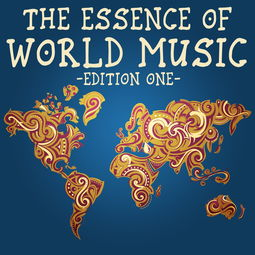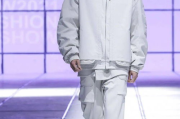
1. The Essence of Ethnic Costumes
Ethnic costumes (民族服饰) are traditional garments that represent the cultural identity of a particular ethnic group. These costumes often have rich histories and symbolisms, telling stories of the community's traditions, beliefs, and values. They are more than just clothing; they are a form of cultural expression that has been passed down through generations.
Understanding the English terms related to ethnic costumes, such as 'traditional attire,' 'folk wear,' or 'native dress,' can help in appreciating their cultural significance. These garments are often adorned with intricate patterns, vibrant colors, and symbolic motifs that reflect the group's heritage.
2. Historical Context of Ethnic Costumes
The historical context of ethnic costumes is crucial for understanding their evolution. Over centuries, these garments have been influenced by various factors, including climate, social structure, and available materials. For instance, in colder regions, ethnic costumes might be heavier and made from wool, while in warmer areas, lighter fabrics like cotton are common.
In English, terms like 'ancestral clothing' or 'traditional wear' often denote the historical aspect of these garments. Exploring this history can offer insights into the cultural practices and social dynamics of different ethnic groups.
3. Symbolism in Ethnic Costumes
Ethnic costumes are rich in symbolism. Each element, from the choice of colors to the patterns and embroidery, carries meaning. For example, red might represent luck and prosperity in one culture, while blue could symbolize peace and harmony in another.
In English, discussing the symbolism of ethnic costumes involves terms like 'iconography' or 'symbolic representation.' Understanding these symbols can deepen one's appreciation of the cultural significance of these garments.
4. Modern Fashion and Ethnic Costumes
In modern fashion, ethnic costumes have found a new audience. Designers often incorporate elements of traditional wear into contemporary styles, creating a fusion that appeals to a global market. This blend of traditional and modern aesthetics is referred to as 'ethno-chic' or 'tribal fashion.'
English terms such as 'cultural fusion' or 'trendsetting fashion' describe this phenomenon. The integration of ethnic elements into modern fashion not only celebrates cultural diversity but also creates a dialogue between different cultures.
5. Preserving Cultural Heritage Through Ethic Costumes
Preservation of ethnic costumes is vital for maintaining cultural heritage. Many communities are working to keep their traditional wear alive by teaching younger generations the art of making these garments. This preservation effort is often referred to as 'cultural conservation' or 'heritage protection.'
In English, discussing the preservation of ethnic costumes involves terms like 'sustainability' and 'cultural continuity.' By wearing and celebrating these costumes, people can contribute to the preservation of their cultural identity.
6. The Global Impact of Ethnic Costumes
Ethnic costumes have a significant global impact, influencing fashion trends and cultural exchange. They serve as a bridge between different cultures, fostering understanding and appreciation. English terms such as 'global fashion trends' or 'cross-cultural inspiration' describe the far-reaching influence of these traditional garments.
As the world becomes more interconnected, the global significance of ethnic costumes continues to grow, making them a valuable part of our cultural heritage.
In conclusion, understanding ethnic costumes in English opens up a world of cultural richness and historical significance. By appreciating these traditional garments, we can celebrate diversity and contribute to the preservation of cultural heritage. Whether in fashion shows or everyday life, ethnic costumes continue to inspire and connect people across the globe.










评论列表